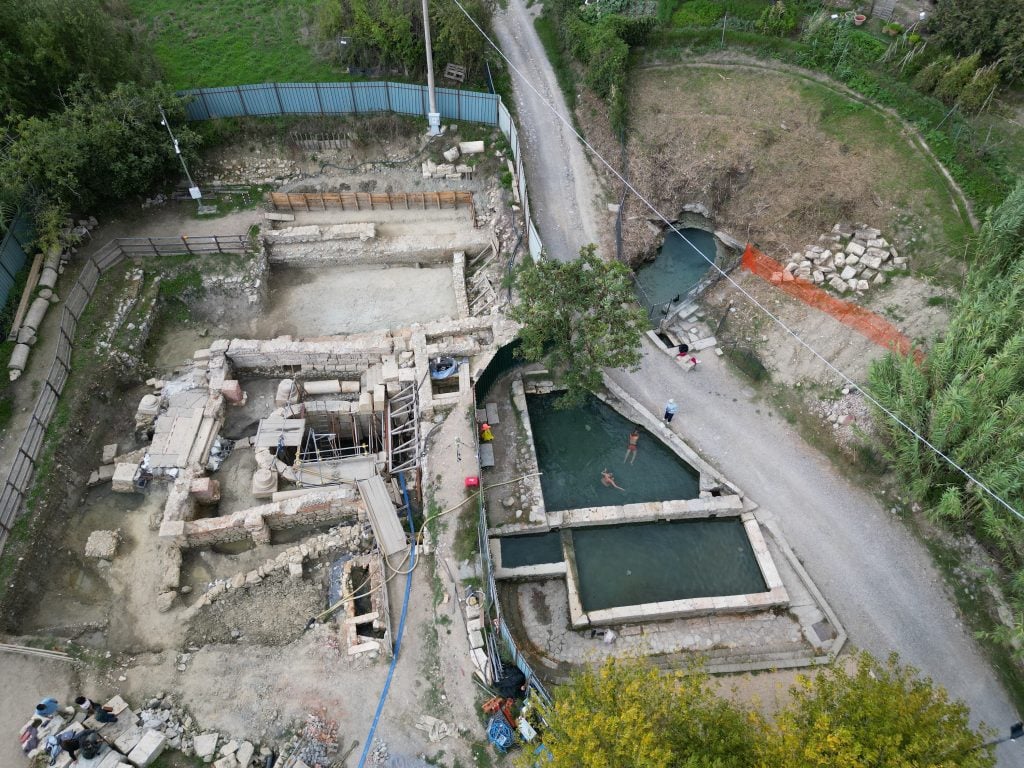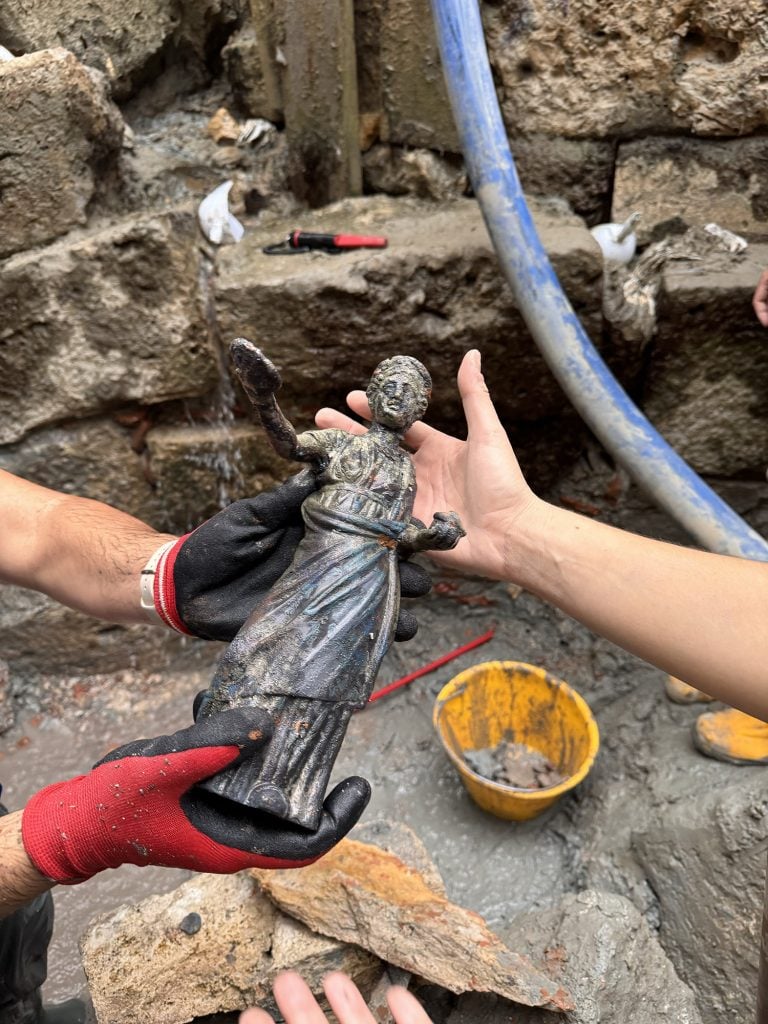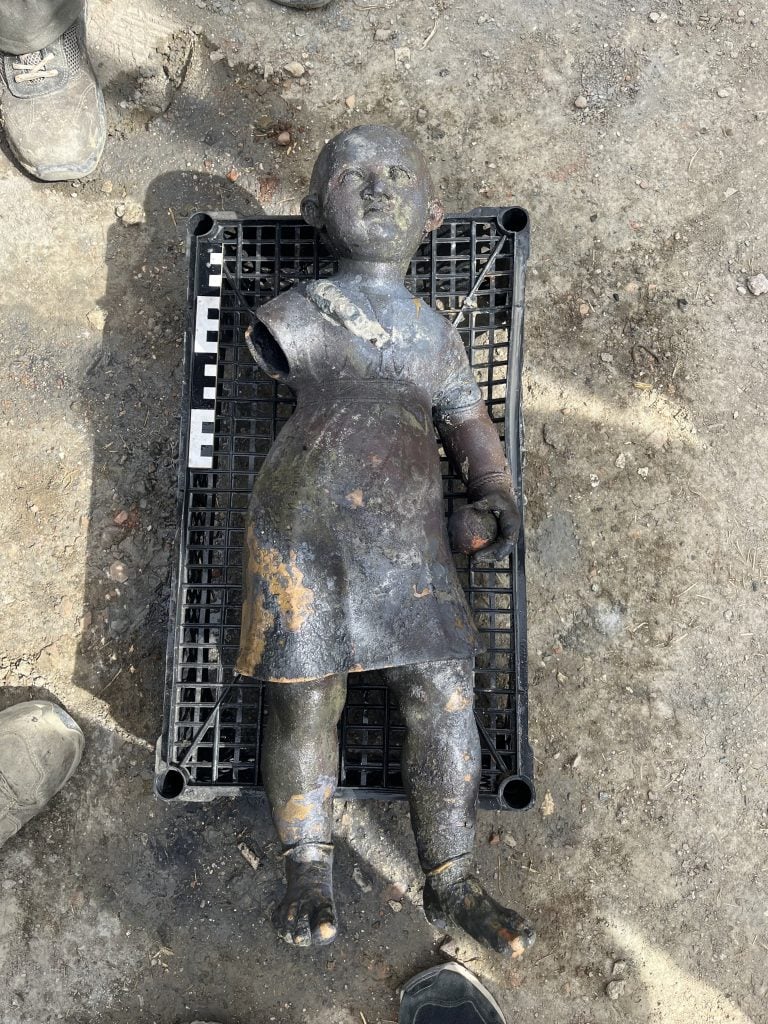
23 Dec Archaeologists Keep Finding Treasure at This Ancient Tuscan Spa
Source Credit: Content and images from Artnet News. Read the original article - https://news.artnet.com/art-world/san-casciano-tuscan-spa-bronze-treasure-2593405
According to Etruscan tradition, an area struck by lightning was considered auspicious and worthy of burying valuable objects. So it continues to prove in San Casciano dei Bagni, an ancient thermal spa town close to Siena, Tuscany, whose waters were believed curative by Etruscans, Romans, and Christians alike.
Back in 2019, the town roughly halfway between Florence and Rome drew far-reaching attention when archaeologists began pulling inscriptions, altars, and bronzes from its wet clay soil—properties that have proved remarkably good preservatives. Five years on, that work continues apace with archaeologists reaching a depth of more than 16 feet at a site called Bagno Grande, or the great baths, into which visitors once tossed votive offerings.

Overhead view of the thermal baths at San Casciano. Photo: courtesy Italian Ministry of Culture.
The picture researchers present is that Bagno Grande was first enclosed by a travertine building by the Etruscans sometime during the 3rd century B.C.E. Later, buildings were added around the pool, including a temple, with the site thoroughly rebuilt during the reigns of the Roman emperors Tiberius and Claudius in 1st century C.E. It continued in use through the 5th-century C.E. before being closed and sealed off with large stone pillars.
The latest discoveries include male and female bronze sculptures, thousands of coins (to date, more than 10,000 have been found), a gold crown, a gold ring, precious stones, and a rare collection of snake sculptures.

A statuette found at the thermal baths. Photo: Ludovico Salerno, SABAP-SI Comune di San Casciano dei Bagni Unistrasi
In Etruscan and Roman cultures, mineral stones were ascribed specific properties. Researchers believe that visitors to San Casciano seeking to improve their health would throw the relevant stones into the pool. This practice is echoed in the thousands of eggshell fragments found in the pool—miraculously, some eggs remain intact, their yolk still visible—with eggs referring the process of rebirth. Researchers believe the abundance of pine cones is reflective of people trying to nourish the pool.

One of the bronze snakes that was found at the ancient thermal spa in Tuscany. Photo: courtesy Italian Ministry of Culture.
The bronze snakes are among the more unusual discoveries to emerge from the latest excavation round at San Casciano. One snake measures more than three feet in length and is believed to be a representation of Agathos Daimon, a bearded snake-like god from Greek mythology. It’s thought the god might have been a sacred protector of the spring and is the largest bronze sculpture ever discovered, with London’s British Museum and the National Archaeological Museum in Naples holding two other notable examples.

A child with a ball found at the thermal baths. Photo: Italian Ministry of Culture.
San Casciano still boasts spa resorts and the ongoing excavations hold lessons for contemporary life, noted Luigi La Rocca, an Italian culture ministry official. “It reminds us of the connection between health, taking care of oneself, and faith. Bagno Grande also shows us a world that is changing from Etruscan to Roman culture.”
Last year, Rome’s Quirinale Palace presented a group of sculptures that had been discovered in the San Casciano thermal baths. In 2026, the town hopes to open a museum dedicated to the artifacts.
Source Credit: Content and images from Artnet News. Read the original article - https://news.artnet.com/art-world/san-casciano-tuscan-spa-bronze-treasure-2593405

